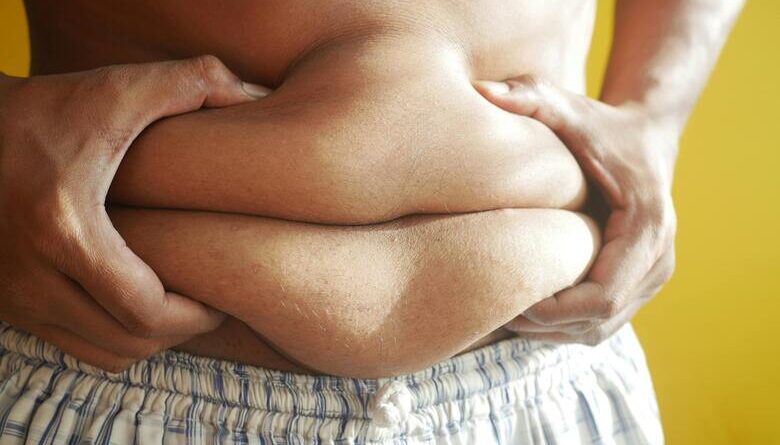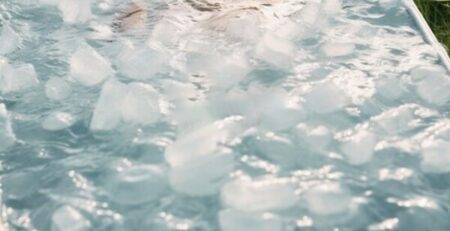When people talk about using a cold plunge for fat loss, they often imagine it’s about burning calories while shivering in icy water. But that’s only a small part of the story. The real magic lies in what happens deep within your cells — a metabolic recalibration triggered by your body’s instinct to survive the cold. At the heart of this process is Brown Adipose Tissue (BAT): a unique type of fat that burns energy to produce heat instead of storing it. Cold exposure doesn’t just activate this tissue; it can fundamentally reshape how your metabolism works.
Table of Contents
Activation of Brown Adipose Tissue (BAT)
Unlike white fat, which stores energy, BAT is metabolically active, packed with mitochondria, and functions as the body’s internal furnace. Its activation is triggered explicitly by cold exposure. When your body’s core temperature drops, the sympathetic nervous system stimulates BAT to oxidize fatty acids and glucose to produce heat, a process called non-shivering thermogenesis.
A seminal study in the New England Journal of Medicine found that even mild cold exposure (around 60°F or 16°C) can significantly increase BAT activity and overall energy expenditure in healthy adults. Further research published in Nature Metabolism confirmed that active brown fat doesn’t just use calories — it also helps regulate blood lipids and glucose, influencing whole-body energy balance.
The “Browning” of White Adipose Tissue
Chronic cold plunging induces a more profound adaptation beyond simply activating existing BAT. It promotes the “browning” of white adipose tissue (WAT), where certain white fat cells develop multilocular lipid droplets and increased mitochondrial density, taking on a thermogenic phenotype known as “beige” fat.
This transformation is mediated by the release of specific hormones, such as irisin, from muscle and FGF21 from the liver, in response to cold stress.
These hormones tell your white fat cells to behave more like brown fat — to build more mitochondria and burn more energy. A study in Cell identified that cold-induced irisin directly stimulates the browning of white fat substrates in mice and humans. In practical terms, this means consistent cold water immersion can potentially increase your body’s overall amount of calorie-burning fat, shifting your baseline metabolic rate.
Impact on Insulin Sensitivity and Substrate Utilization
Cold plunge doesn’t just change fat; it changes how your body uses energy altogether.. Enhanced insulin sensitivity means the body requires less insulin to manage blood glucose, reducing the hormone’s potent fat-storage signaling.
In one study published in the Journal of Applied Physiology, short-term cold acclimation improved insulin sensitivity by over 40% in participants with type 2 diabetes, facilitating better glucose uptake into muscles instead of being stored as fat.
At the same time, your body’s need for fuel to produce heat during and after cold exposure increases the mobilization and oxidation of stored lipids. This process was detailed in research from the American Journal of Physiology, which showed that cold-induced thermogenesis preferentially utilizes lipids as an energy substrate, directly pulling from fat stores.
The Afterburn Effect: Sustained Metabolic Elevation
Even after you step out of the cold, your metabolism doesn’t immediately return to baseline. The effort required to restore core body temperature post-plunge leads to a sustained increase in energy expenditure, a form of excess post-exercise oxygen consumption (EPOC). Research in the Scandinavian Journal of Clinical and Laboratory Investigation measured a significant elevation in metabolic rate for hours after acute cold exposure, contributing to a higher total daily energy expenditure.
This sustained thermogenic response helps explain why people who regularly engage in cold plunging or winter swimming often report improved energy levels, better blood sugar control, and easier weight management — even without major changes to diet or exercise.
Conclusion
The idea that a cold plunge can “melt fat” oversimplifies a much deeper biological process. What’s really happening is a multi-layered metabolic response:
- Activation and growth of brown and beige fat, which burns calories to produce heat
- Improved insulin sensitivity, reducing fat storage
- Sustained metabolic elevation that continues long after you’ve dried off
Cold plunging isn’t a magic bullet for weight loss, but as part of a broader wellness routine, it can help recalibrate your metabolism and support a leaner, more efficient body.












Leave a Reply